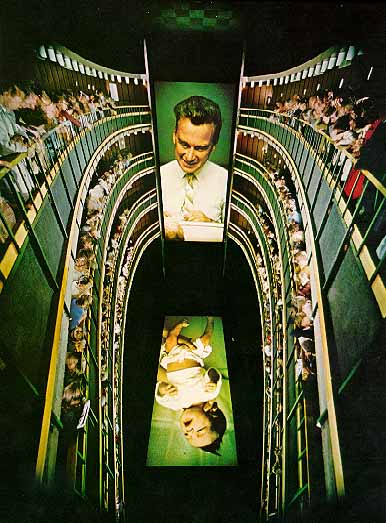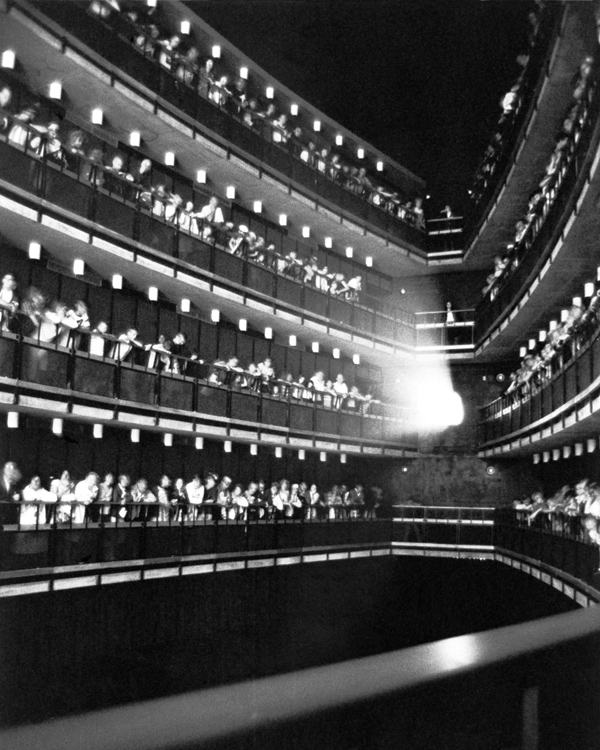If, in paying tribute, the map plucked
Gene Youngblood's given and surnames
from Swedish and Alabamian geographies,
contracting then expanding.
(If Map #7)
2021, digital video, color, sound,
15 seconds.
Guitar: Dean Santomieri. Data: © OpenStreetMap contributors.
A few days after media scholar and radical thinker Gene Youngblood passed, on 6 April 2021, Bryan Konefsky issued a call for fifteen-second tributes that he'd coalesce and screen during Experiments in Cinema v16.1. His montage became part of Experiment 1 (of 16) on May Day 2021 and was available online during that month. Although the Experiments in Cinema program has been taken down, the tribute convened by Third Space Network on 15 June 2021 has been archived.
Despite the forward-thinking scope of Youngblood's best known work, Expanded Cinema, originally published in 1970 and recently honored with a Fiftieth Anniversary Edition, the section that was of most practical use to me in the late 1980s and early 1990s was Part Two: Synaesthetic Cinema: The End of Drama. This section provided different angles on films and filmmakers that were already cemented into the canon of experimental film through, say, Film Culture and P. Adams Sitney's Visionary Film. More importantly, it discussed – back to back! – XFilm (1968) by John Luther Schofill and Andy Warhol's Exploding Plastic Inevitable (1966) by Ronald Nameth. I can't recall exactly when I purchased my copy of Expanded Cinema but from 1986-89 I worked with John and Beth Schofill on the Experimental Film Coalition screenings at Chicago's Randolph Street Gallery and Nameth's film never failed to wow audiences the several times we screened it.
& so my response to the Gene Youngblood tribute call was an If Map inspired by Warhol's EPI. As with If Map #2, maps centered on placenames found in OpenStreetMap are concatenated to produce a whole; there is a "Gene" in Sweden and a "Youngblood" in Alabama. The bearing of each of the two segments is rotated for aesthetic reasons:
- the portside footprint of Domsjö Fabriker's pulp and bio-refinery tanks in Gene appealed to me and I wanted them seen
- cemeteries are the predominant points of interest in Youngblood; that seemed unduly morbid to me and I wanted them less seen
- with north not at the top of the map, the extreme zoom out that ends the piece may leave the viewer with a faint whiff of a Fullerian Spaceship Earth in their nostrils
The 16mm print of Nameth's film is no longer in distribution and is said to no longer be extant – I may write more about this in a later blog post – but Warhol's EPI was included on Re:voir's 2000 VHS release of Visions of Warhol, currently available on DVD but without the Nameth piece. In If Map #1 I ran an overnight k-means cluster analysis of every single frame of the film that inspired it in order to determine colors of the cartographic layers; here, because I had less than 72 hours to create my tribute, I eyeballed two dozen appealing colors from the VHS version and the layer colors are randomly, successively selected from that palette.
The screen-filling font, Nicole Fally's Stoke Light, was chosen for the fullness of its uppercase "G" and the closed, looping form of its lowercase "g". I suppose the "Y" could have been a dealbreaker but it's excellent, and the upward sloping bar of the lowercase "e" cheers me. Stoke made the transition to map glyph well enough for this blindingly quick piece.
The soundtrack to Warhol's EPI is a mix of needle drops on Velvet Underground and Nico tracks and what I presume to be live recordings made during performances at Poor Richard's, the Chicago club where Nameth filmed the EPI in June 1966. I told Dean Santomieri, who in his own words "usually plays clean", that I imagined "abrupt entry and exit of feedback-heavy guitar, suggesting both wailing for a life lost and the raw sonic energy that could match the ideological enthusiasms of the 60s & 70s that birthed Expanded Cinema". He generously provided me with fresh tracks full of distortion and the permission to edit them down into the final soundtrack.
Eric Theise, May 2021
Postscript
An image that's always leapt out at me from page 353 of Expanded Cinema is the full page photo from the ambitious Labyrinthe pavilion at Expo '67. Vertical cinema shocked then and remains unconventional today. The distance between this single, evocative black & white image, with limited word count on the printed page, and today's comprehensive range of images, blog posts, and the ability to stream a composite of the five screen film on demand from the National Film Board would not be lost on Gene Youngblood.

